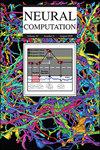Crystal-LSBO: Automated Design of De Novo Crystals With Latent Space Bayesian Optimization
IF 2.1
4区 计算机科学
Q3 COMPUTER SCIENCE, ARTIFICIAL INTELLIGENCE
引用次数: 0
Abstract
Generative modeling of crystal structures is significantly challenged by the complexity of input data, which constrains the ability of these models to explore and discover novel crystals. This complexity often confines de novo design methodologies to merely small perturbations of known crystals and hampers the effective application of advanced optimization techniques. One such optimization technique, latent space Bayesian optimization (LSBO), has demonstrated promising results in uncovering novel objects across various domains, especially when combined with variational autoencoders (VAEs). Recognizing LSBO’s potential and the critical need for innovative crystal discovery, we introduce Crystal-LSBO, a de novo design framework for crystals specifically tailored to enhance explorability within LSBO frameworks. Crystal-LSBO employs multiple VAEs, each dedicated to a distinct aspect of crystal structure—lattice, coordinates, and chemical elements—orchestrated by an integrative model that synthesizes these components into a cohesive output. This setup not only streamlines the learning process but also produces explorable latent spaces thanks to the decreased complexity of the learning task for each model, enabling LSBO approaches to operate. Our study pioneers the use of LSBO for de novo crystal design, demonstrating its efficacy through optimization tasks focused mainly on formation energy values. Our results highlight the effectiveness of our methodology, offering a new perspective for de novo crystal discovery.Crystal-LSBO:基于隐空间贝叶斯优化的De Novo晶体自动设计。
晶体结构的生成建模受到输入数据复杂性的极大挑战,这限制了这些模型探索和发现新晶体的能力。这种复杂性常常限制了从头设计方法,仅仅是已知晶体的小扰动,阻碍了先进优化技术的有效应用。其中一种优化技术,隐空间贝叶斯优化(LSBO),在发现不同领域的新对象方面已经证明了有希望的结果,特别是当与变分自编码器(VAEs)结合使用时。认识到LSBO的潜力和对创新晶体发现的迫切需求,我们推出了crystal -LSBO,这是一种为晶体量身定制的全新设计框架,旨在增强LSBO框架内的可探索性。crystal - lsbo采用多个VAEs,每个VAEs都致力于晶体结构的不同方面-晶格,坐标和化学元素-由一个综合模型协调,将这些组件合成为一个有凝聚力的输出。这种设置不仅简化了学习过程,而且由于降低了每个模型学习任务的复杂性,还产生了可探索的潜在空间,使LSBO方法能够运行。我们的研究率先使用LSBO进行从头晶体设计,并通过主要关注地层能值的优化任务证明了其有效性。我们的结果突出了我们的方法的有效性,为从头晶体发现提供了一个新的视角。
本文章由计算机程序翻译,如有差异,请以英文原文为准。
求助全文
约1分钟内获得全文
求助全文
来源期刊

Neural Computation
工程技术-计算机:人工智能
CiteScore
6.30
自引率
3.40%
发文量
83
审稿时长
3.0 months
期刊介绍:
Neural Computation is uniquely positioned at the crossroads between neuroscience and TMCS and welcomes the submission of original papers from all areas of TMCS, including: Advanced experimental design; Analysis of chemical sensor data; Connectomic reconstructions; Analysis of multielectrode and optical recordings; Genetic data for cell identity; Analysis of behavioral data; Multiscale models; Analysis of molecular mechanisms; Neuroinformatics; Analysis of brain imaging data; Neuromorphic engineering; Principles of neural coding, computation, circuit dynamics, and plasticity; Theories of brain function.
 求助内容:
求助内容: 应助结果提醒方式:
应助结果提醒方式:


